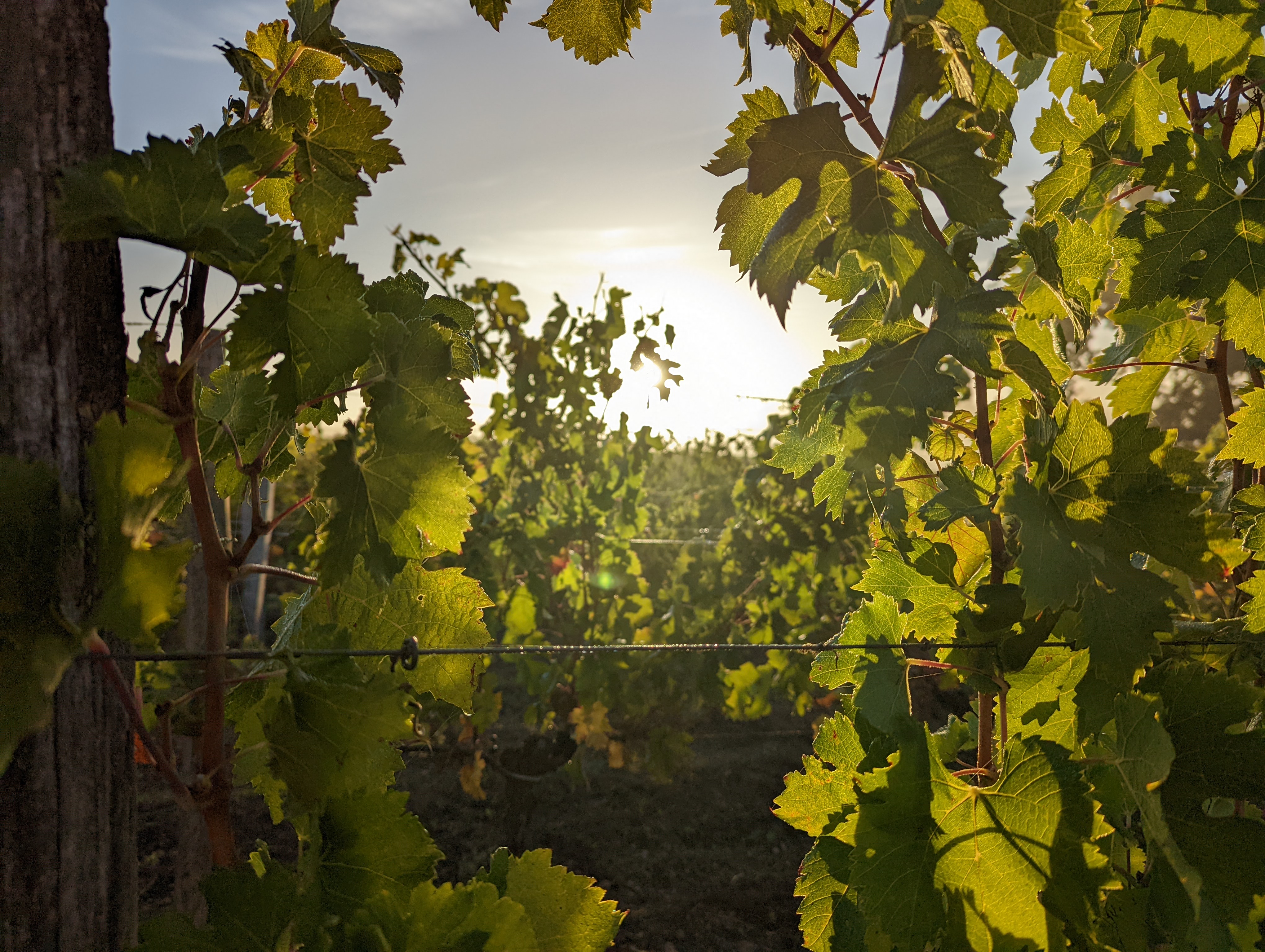Sauvignon Blanc: the star grape variety of Bordeaux white wines introduces itself.
Among the best-known grape varieties in the wine world, Sauvignon or Sauvignon Blanc is one of the most popular and recognisable in the world, mainly for its use in the production of dry white wines. In France, it is the third most widely grown white grape variety, particularly in the Bordeaux region. It is included in the Official Catalogue of wine grape varieties, list A. We wanted to find out more about this grape variety, which is so popular with wine-lovers.
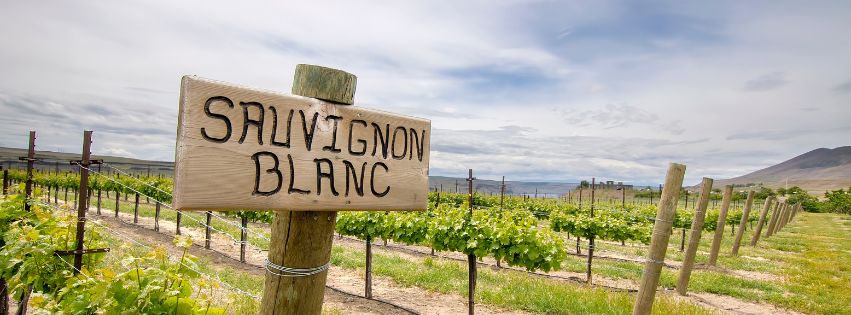
Its origin
Sauvignon Blanc is native to the Bordeaux region and has historically been associated with the Bordeaux wine region, where it has been used for centuries to produce dry white wines, as well as sweet and syrupy wines, often in association with the Sémillon grape variety. Its name comes from the French word "sauvage", in reference to its wild growth in nature. However, for a long time now, this grape variety has known no frontiers, and has been able to adapt to and sublimate terroirs beyond the confines of France. Indeed, Sauvignon Blanc has now spread all over the world and is grown in numerous wine-growing regions. Some of these wine-growing regions owe their reputation on the wine scene to this grape variety:
- Loire, France : In addition to Bordeaux, France's Loire region, particularly the Sancerre and Pouilly-Fumé appellations, is also known for its Sauvignon Blanc, which often display distinct mineral notes.
- New-Zealand : New Zealand's Marlborough region has become famous for its Sauvignon Blancs, which are renowned for their intense citrus aromas and lively freshness.
- Californiea, United-States : In California, Sauvignon Blanc is grown in several wine regions, including Napa Valley and Sonoma. Californian wines are often richer and fruitier than their French counterparts.
- Chile and Argentina : Sauvignon Blanc is also successfully grown in South America, particularly Chile and Argentina, where it produces wines with great freshness and tropical fruit flavours.
- South Africa and Australia : In South Africa and Australia, Sauvignon Blanc is also successfully grown, producing wines with a range of aromas from citrus to tropical fruit.
Over time, Sauvignon Blanc has become one of the most widely grown and internationally appreciated white grape varieties, with a wide variety of styles and flavours depending on the terroir and viticultural practices of each region. In France, apart from the Bordeaux region, it is mainly found in the Languedoc, the Loire Valley, the Cher Valley, the Saint-Bris plateau, the Côtes-de-Duras and Provence. Sauvignon also contributes to the reputation of the great wines of Sancerre, Pouilly-fumé and Quincy.
Characteristics
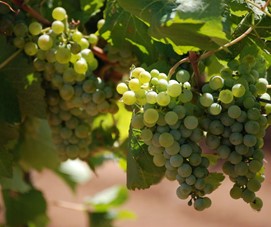
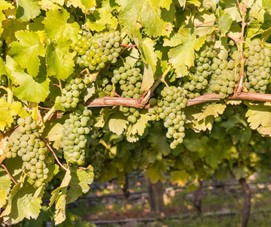
Bunches of Sauvignon Blanc are small to medium-sized, compact, truncated cones with spherical or slightly oval berries. The grapes have a thin, green to pale yellow skin when ripe and are often harvested early to preserve their natural acidity. Sauvignon likes freshness and limestone, which is why it flourishes particularly well in south-western France and New Zealand.
However, its yields are relatively low, which is why it is regularly blended with other varieties.
Flavours & aromas
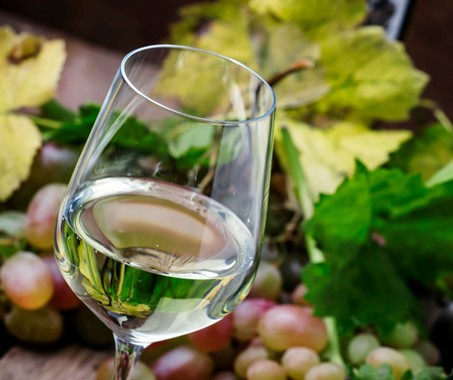
Sauvignon Blanc is famous for its intense, expressive aromas, which can vary depending on a variety of factors such as terroir, climate and winemaking techniques. Here are some of the characteristic aromas recognised for Sauvignon Blanc:
- Citrus aromas: Citrus notes are often dominant in Sauvignon Blanc wines. You can detect aromas of lime, grapefruit, lemon and sometimes even orange.
- Fresh herb flavours: Sauvignon Blanc can have aromas of fresh herbs, such as mint, basil, thyme or even boxwood. These notes add a refreshing herbaceous dimension to the wine.
- Tropical fruit flavours : Some Sauvignon Blancs, particularly those from warmer regions, can display tropical fruit aromas such as mango, passion fruit, pineapple or papaya. These aromas add extra sweetness and complexity to the wine.
- Floral aromas: Delicate floral notes, such as honeysuckle or acacia flower, may also be present in some Sauvignon Blancs, adding an extra touch of perfume to the bouquet.
- Mineral aromas : Some Sauvignon Blanc wines may have mineral notes, reminiscent of gunflint, chalk or flint. These mineral aromas add an earthy, complex dimension to the wine.
Note that the perception of aromas can vary from one wine to another depending on many factors, including the style of winemaking, the age of the wine and the tasting conditions.
However, these characteristic aromas are often associated with Sauvignon Blanc, making it one of the most distinctive and appreciated white grape varieties in the world. Our Château La Rose Perrière Blanc, whose latest vintage of 2023 is the first to be labelled organic, gives pride of place to Sauvignon Blanc. Its aromatic potential is revealed by the Lussac Saint-Emilion terroir and its balanced blend with Muscadelle and Semillion.
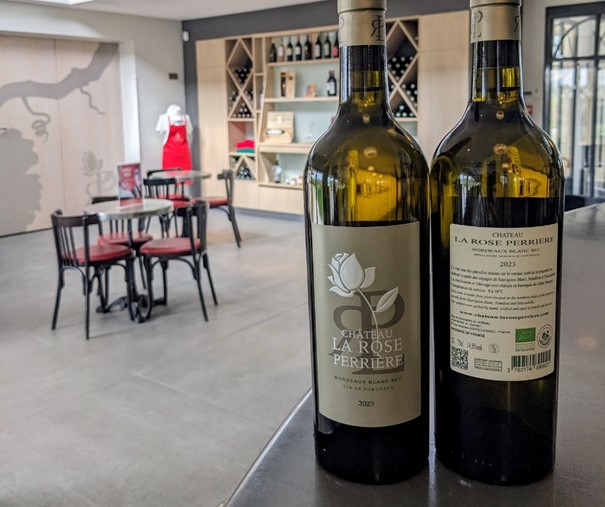
Food and wine pairing
Because of its crisp acidity and distinct aromas, Sauvignon Blanc is a versatile white wine that pairs well with a wide variety of dishes. Here are some food and wine pairing suggestions to accompany a Sauvignon Blanc:
- Seafood: Sauvignon Blanc wines go particularly well with seafood, such as oysters, prawns, mussels, clams and crabs. The acidity of the wine complements the freshness of the seafood and brings out its delicate flavours.
- Fish: Whether grilled, poached, baked or in sushi, Sauvignon Blanc is an excellent companion. It goes well with light fish such as tilapia, cod, sea bass, salmon and trout.
- Salads: Sauvignon Blanc wines can be paired with a variety of fresh, light salads, especially those containing greens, citrus fruit and tangy dressings. Try a warm goat's cheese salad or a rocket salad with cherry tomatoes and balsamic vinegar.
- Goat cheese : The combination of the freshness of Sauvignon Blanc with the richness and sweetness of goat's cheese is classic. Fresh or mature goat's cheeses are good choices to accompany this wine.
- Asian dishes: Asian flavours, particularly those of Thai and Vietnamese cuisine, often go well with Sauvignon Blanc because of its refreshing character. Dishes such as green curry, spring rolls or rice vermicelli salads can be delicious options.
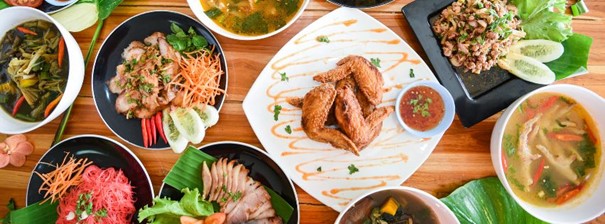
- Grilled vegetables : Grilled vegetables, such as asparagus, peppers, courgettes and artichokes, are ideal accompaniments for a Sauvignon Blanc. The acidity of the wine complements the grilled flavours of the vegetables.
In general, look for light to medium-bodied dishes that do not overpower the delicate aromas of Sauvignon Blanc. The aim is to create a balance between the wine and the food, bringing out the qualities of each. Enjoy your tasting!
